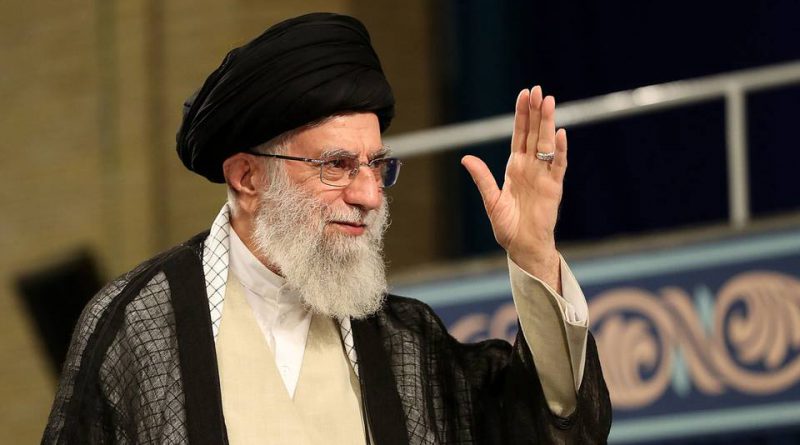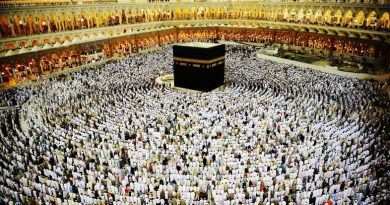Iran’s leader ordered crackdown on unrest — “Do whatever it takes to end it”: Special Report
He was also angered by the burning of his image and the destruction of a statue of the republic’s late founder, Ayatollah Ruhollah Khomeini.
Tehran (Reuters) – After days of protests across Iran last month, Supreme Leader Ayatollah Ali Khamenei appeared impatient. Gathering his top security and government officials together, he issued an order: Do whatever it takes to stop them.
That order, confirmed by three sources close to the supreme leader’s inner circle and a fourth official, set in motion the bloodiest crackdown on protesters since the Islamic Revolution in 1979.
About 1,500 people were killed during less than two weeks of unrest that started on Nov. 15. The toll, provided to Reuters by three Iranian interior ministry officials, included at least 17 teenagers and about 400 women as well as some members of the security forces and police.
The toll of 1,500 is significantly higher than figures from international human rights groups and the United States. A Dec. 16 report by Amnesty International said the death toll was at least 304. The U.S. State Department, in a statement to Reuters, said it estimates that many hundreds of Iranians were killed, and has seen reports that number could be over 1,000.
The figures provided to Reuters, said two of the Iranian officials who provided them, are based on information gathered from security forces, morgues, hospitals and coroner’s offices.
The government spokesman’s office declined to comment on whether the orders came from Khamenei and on the Nov. 17 meeting. Iran’s mission to the United Nations did not respond to a request for comment for this story.
What began as scattered protests over a surprise increase in gasoline prices quickly spread into one of the biggest challenges to Iran’s clerical rulers since the 1979 Islamic Revolution.
By Nov. 17, the second day, the unrest had reached the capital Tehran, with people calling for an end to the Islamic Republic and the downfall of its leaders. Protesters burned pictures of Khamenei and called for the return of Reza Pahlavi, the exiled son of the toppled Shah of Iran, according to videos posted on social media and eye witnesses.
That evening at his official residence in a fortified compound in central Tehran, Khamenei met with senior officials, including security aides, President Hassan Rouhani and members of his cabinet.
At the meeting, described to Reuters by the three sources close to his inner circle, the 80-year-old leader, who has final say over all state matters in the country, raised his voice and expressed criticism of the handling of the unrest. He was also angered by the burning of his image and the destruction of a statue of the republic’s late founder, Ayatollah Ruhollah Khomeini.
“The Islamic Republic is in danger. Do whatever it takes to end it. You have my order,” the supreme leader told the group, one of the sources said.
Khamenei said he would hold the assembled officials responsible for the consequences of the protests if they didn’t immediately stop them. Those who attended the meeting agreed the protesters aimed to bring down the regime.
“The enemies wanted to topple the Islamic Republic and immediate reaction was needed,” one of the sources said.
The fourth official, who was briefed on the Nov. 17 meeting, added that Khamenei made clear the demonstrations required a forceful response.
“Our Imam,” said the official, referring to Khamenei, “only answers to God. He cares about people and the Revolution. He was very firm and said those rioters should be crushed.”
Tehran’s clerical rulers have blamed “thugs” linked to the regime’s opponents in exile and the country’s main foreign foes, namely the United States, Israel and Saudi Arabia, for stirring up unrest. Khamenei has described the unrest as the work of a “very dangerous conspiracy.”
A Dec. 3 report on Iran’s state television confirmed that security forces had fatally shot citizens, saying “some rioters were killed in clashes.” Iran has given no official death toll and has rejected figures as “speculative.”
“The aim of our enemies was to endanger the existence of the Islamic Republic by igniting riots in Iran,” said the commander-in-chief of the elite Revolutionary Guards Corps, Hossein Salami, last month, according to Iranian media.
The Revolutionary Guards declined to comment for this report.
Iran’s interior minister said on Nov. 27 more than 140 government sites had been set on fire along with hundreds of banks and dozens of petrol stations, while 50 bases used by security forces were also attacked, according to remarks reported by Iran’s state news agency IRNA. The minister said up to 200,000 people took part in the unrest nationwide.



